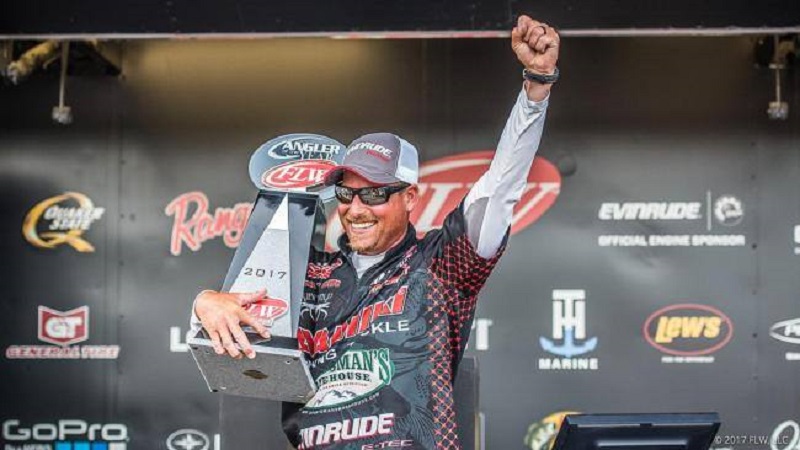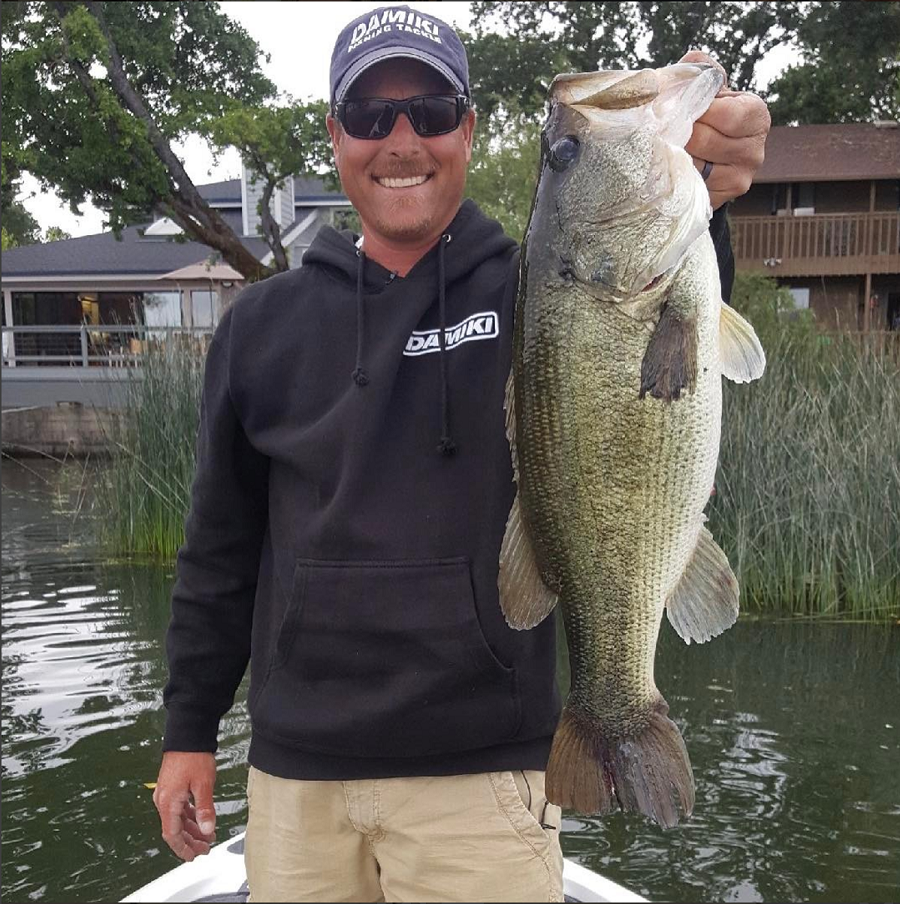
Fishing heavy cover is a great way to catch giant bass. Often, the biggest bass in the lake live in the thickest cover. Getting them to bite can be a challenge and landing them can be even more difficult.
FLW Tour pro and reigning Angler of the Year, Bryan Thrift has a specific approach to each type of cover that includes having the right rods, lures, and lures.
When to Fish Heavy Cover
Thrift believes that heavy cover is the way to go no matter what the season.
“If the lake has thick grass, gnarly laydowns, docks or lily pads, I will always start off fishing those. It really doesn’t matter what season it is, I feel that the biggest fish and biggest concentration of fish will be around heavy cover,” he says.
While he will target any type of cover, he does change how he fishes depending on the cover he is fishing.
READ RELATED: 5 Tips to Skip Docks Like Bryan Thrift
Targeting Laydowns, Logs, and Brush | Bass by Wood
When approaching a big piece of wooden cover, Thrift goes right in the middle with his first pitch.
“I always go straight to the center of the cover, because that is where the biggest fish is going to be most of the time. I want that first cast to surprise the fish and if you pitch to the edges they will see the bait a few feet away and may not bite” he shares and says that letting the bait fall straight to the center is key. “I want that bait to fall to the base of the laydown or tree and use a ¼- to ¾-ounce. weight depending on the depth.”
His choice of lure is a soft plastic Damiki Knock Out rigged on a straight shank flipping hook tied with a snell knot to 20-pound P-Line Tactical fluorocarbon.
“That line has a lot less memory than other fluorocarbons and when you are making the same repeated motion all day flipping and pitching, that is really important. It also has excellent knot strength when you use a snell knot,” he says.
Punching Grass | Bass in Thick Vegetation
One of Thrift’s favorite ways to fish heavy grass is with a big hook, one to two-ounce tungsten weight and a 4” Damiki Air Craw. “Usually I will spool up with 65-pound P-Line TCB 8 braid. It is coated with Teflon and that makes it much smoother going in and out of the grass. You don’t get that ‘see-sawing’ sound you get with other braids that will spook the fish,” he believes.
When approaching an endless line of grass, he will punch it all but says there are certain things he looks for that seem to produce more fish. “Really you just want some sort of irregularity, it could be a point in the grass, little indentation or a mix of different types of grass. It could also be as simple as the color of the grass changing or if one section has a little slime on it, those seem to be where you get more bites,” he says.
READ RELATED: Targeting Clear Water Bass
Targeting Lily Pads | Bass Under Canopies
When fishing lily pads, Thrift uses a ChatterBait and over the years has realized that the lighter bait makes a big difference in fishing them effectively.
“I normally use a ½-ounce model when fishing open water or scattered cover and if you do that around lily pads you will hang up often and it can be really aggravating. The lighter bait makes it much easier to fish it effectively,” he says and adds that the 3/8- or even ¼-ounce version allows him to feather the bait around lily pad stalks and not get hung up. Thrift fishes these baits on a rod designed, a 6'9" medium heavy ChatterBait rod from Fitzgerald Rods.
Skipping Docks | Bass Relating to Vertical Structure, Ambush Points
Bryan Thrift is known as one of the best at skipping docks and he does it often. He feels that when the dock bite is on, he has his best chance of catching above average sized fish by fishing this way.
“I may be fishing for five to seven bites all day, but they are going to be big ones,” he begins and says that the jig is nearly always his first choice for skipping. “I use a 3/8- and 1/2-ounce Damiki Mamba jig with a Damiki Knock Out as a trailer. I will fish it on either 15- or 20-pound P-Line Tactical fluorocarbon and change based on the size of the jig.”
Thrift says the 15-pound line works better for the 3/8-ounce. jig and allows for better accuracy and distance on his casts. He also designed a rod just for skipping for Fitzgerald Rods, a 6'9" Heavy Skipping Special.
“It was designed to have the best tip to skip a bait farther and the length is perfect. It also has the backbone you need to get a fish from out under a dock,” he adds.
No matter what time of year you are fishing, targeting heavy cover can be the best way to catch big bass. Bryan Thrift has perfected his approach to fishing thick cover and says that having the right rod, line, lure, and approach makes all the difference.


 Advertising
Advertising